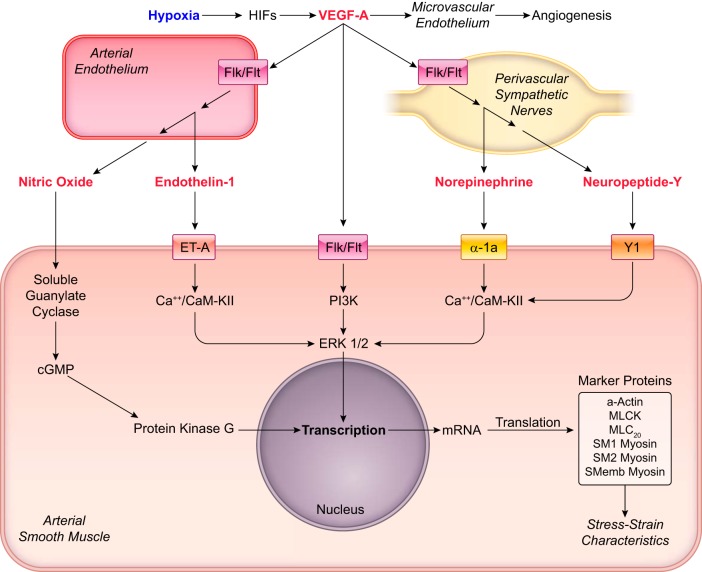FIGURE 11.
Hypoxia acts through the HIF family of transcription factors to influence the expression of numerous genes, one of the most important of which is vascular endothelial growth factor (VEGF). In addition to its well-documented angiogenic ability to increase capillary density, VEGF also exerts multiple effects on the main cell types that make up cerebral arteries. Through direct effects on Flk (VEGFR-2)/Flt (VEGFR-1) receptors expressed by vascular smooth muscle, VEGF can promote contractile dedifferentiation. Through action on Flk/Flt receptors expressed in vascular endothelium, VEGF can promote the synthesis and release of NO and endothelin-1. In turn, NO can act through cGMP and protein kinase G to promote contractile differentiation. Similarly, endothelin-1 can act through ET-A receptors also to promote contractile differentiation. Through action on Flk/Flt receptors expressed in perivascular adrenergic nerves, VEGF can promote the release of norepinephrine and neuropeptide Y, both of which can activate specific receptors to promote contractile differentiation. Although this diagram lists only a few of the pathways through which VEGF can influence arterial contractility, it emphasizes that hypoxia works through VEGF and other downstream molecules to modulate arterial function in the fetal cerebral circulation.

